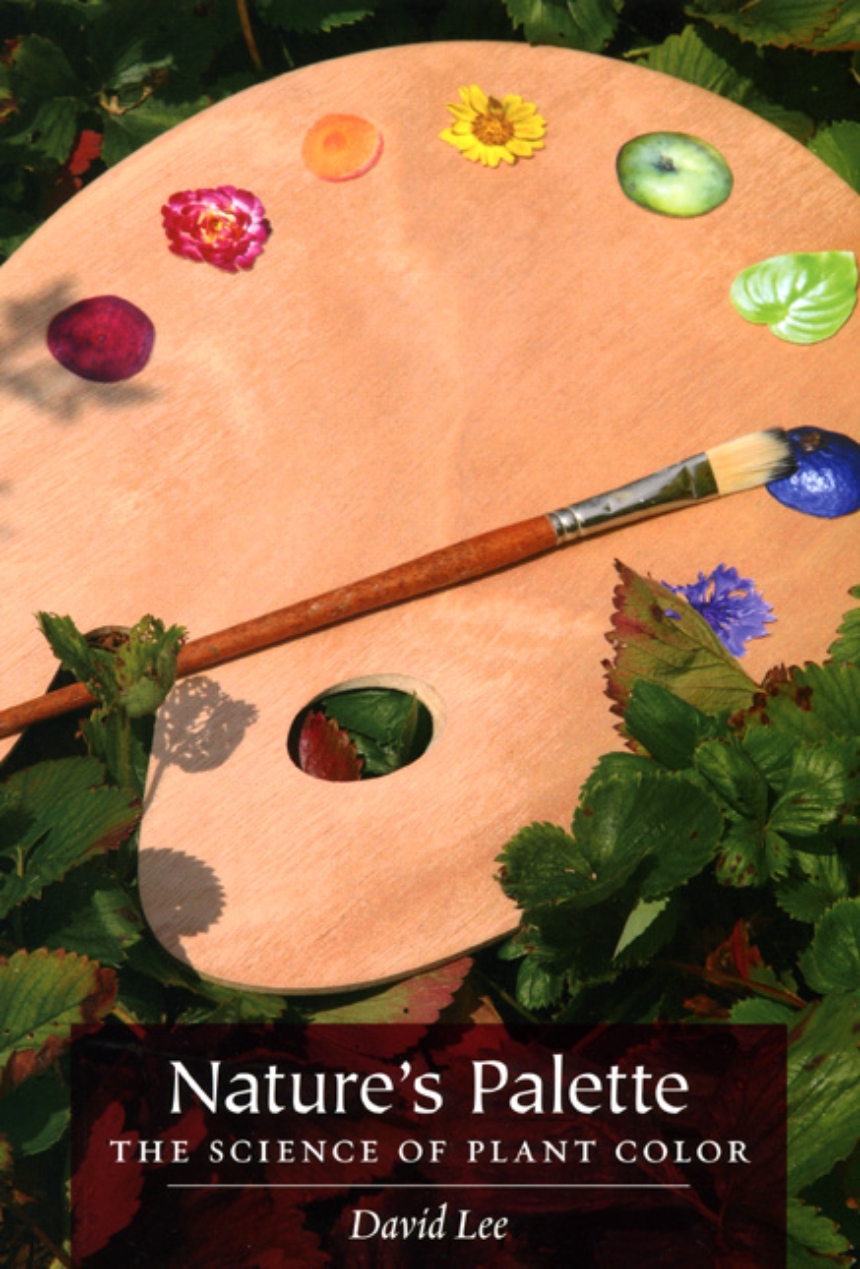Nature’s Palette
The Science of Plant Color
Though he didn’t realize it at the time, David Lee began this book twenty-five years ago as he was hiking in the mountains outside Kuala Lumpur. Surrounded by the wonders of the jungle, Lee found his attention drawn to one plant in particular, a species of fern whose electric blue leaves shimmered amidst the surrounding green. The evolutionary wonder of the fern’s extravagant beauty filled Lee with awe—and set him on a career-long journey to understand everything about plant colors.
Nature’s Palette is the fully ripened fruit of that journey—a highly illustrated, immensely entertaining exploration of the science of plant color. Beginning with potent reminders of how deeply interwoven plant colors are with human life and culture—from the shifting hues that told early humans when fruits and vegetables were edible to the indigo dyes that signified royalty for later generations—Lee moves easily through details of pigments, the evolution of color perception, the nature of light, and dozens of other topics. Through a narrative peppered with anecdotes of a life spent pursuing botanical knowledge around the world, he reveals the profound ways that efforts to understand and exploit plant color have influenced every sphere of human life, from organic chemistry to Renaissance painting to the highly lucrative orchid trade.
Lavishly illustrated and packed with remarkable details sure to delight gardeners and naturalists alike, Nature’s Palette will enchant anyone who’s ever wondered about red roses and blue violets—or green thumbs.
Nature’s Palette is the fully ripened fruit of that journey—a highly illustrated, immensely entertaining exploration of the science of plant color. Beginning with potent reminders of how deeply interwoven plant colors are with human life and culture—from the shifting hues that told early humans when fruits and vegetables were edible to the indigo dyes that signified royalty for later generations—Lee moves easily through details of pigments, the evolution of color perception, the nature of light, and dozens of other topics. Through a narrative peppered with anecdotes of a life spent pursuing botanical knowledge around the world, he reveals the profound ways that efforts to understand and exploit plant color have influenced every sphere of human life, from organic chemistry to Renaissance painting to the highly lucrative orchid trade.
Lavishly illustrated and packed with remarkable details sure to delight gardeners and naturalists alike, Nature’s Palette will enchant anyone who’s ever wondered about red roses and blue violets—or green thumbs.
432 pages | 438 color plates, 31 halftones, 83 line drawings | 6 x 9 | © 2007
Biological Sciences: Biochemistry, Biology--Systematics, Natural History
Earth Sciences: Environment
Reviews
Table of Contents
Preface
Acknowledgments
One Coloring Our Bodies with Plants
Two Light, Vision, and Color
Three Nature’s Palette
Four The Canvas
Five Patterns
Six Leaves
Seven Flowers
Eight Fruits and Seeds
Nine Stems and Roots
Ten Iridescent Plants
Eleven Why Leaves Turn Red
Twelve Chlorophilia
Appendix A: Plant Pigments and Related Molecules
Appendix B: Separating Plant Pigments by Paper Chromatography
Chapter Notes
Illustration Notes
Index
Acknowledgments
One Coloring Our Bodies with Plants
Two Light, Vision, and Color
Three Nature’s Palette
Four The Canvas
Five Patterns
Six Leaves
Seven Flowers
Eight Fruits and Seeds
Nine Stems and Roots
Ten Iridescent Plants
Eleven Why Leaves Turn Red
Twelve Chlorophilia
Appendix A: Plant Pigments and Related Molecules
Appendix B: Separating Plant Pigments by Paper Chromatography
Chapter Notes
Illustration Notes
Index
